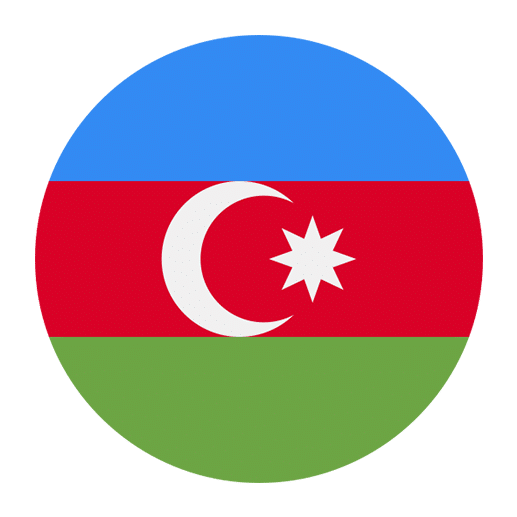Understanding the concept of aspect in verbs is crucial for mastering any language, and Azerbaijani is no exception. In Azerbaijani, as in many other languages, verbs can express different aspects, which provide nuanced meanings about the nature of an action. This article will delve into the two primary aspects in Azerbaijani verbs: the perfective and imperfective aspects. By the end of this article, you will have a clearer understanding of how these aspects function, how to form them, and their usage in everyday Azerbaijani.
What is Aspect?
Before diving into the specifics of Azerbaijani, it is important to understand what aspect is in general. Aspect is a grammatical category that expresses how an action, event, or state, denoted by a verb, extends over time. Unlike tense, which locates an action in time (past, present, future), aspect describes the nature of the action itself – whether it is completed, ongoing, habitual, etc.
Perfective Aspect in Azerbaijani
The perfective aspect in Azerbaijani is used to describe actions that are seen as complete or whole. It focuses on the action in its entirety, without reference to its internal structure or duration.
Formation of Perfective Aspect
In Azerbaijani, the perfective aspect is often formed using specific verb forms and sometimes auxiliary verbs. Here’s a basic breakdown of how you can form the perfective aspect:
1. **Simple Past Tense:** One of the most straightforward ways to express the perfective aspect is through the simple past tense. For example:
– Yazdı (He/she wrote)
– Oxudu (He/she read)
2. **Auxiliary Verbs:** Sometimes, auxiliary verbs like “etmək” (to do) are used to create perfective forms. For example:
– Yazıb etdi (He/she has written)
– Gəlib gördü (He/she came and saw)
3. **Prefixes and Suffixes:** In some cases, prefixes and suffixes can alter the verb to give it a perfective meaning. For example:
– Bitirmək (to finish) from bitir (to end)
Usage of Perfective Aspect
The perfective aspect is used in the following contexts:
1. **Completed Actions:** When an action is viewed as a single, completed event.
– Mən kitabı oxudum. (I read the book.)
2. **Sequential Actions:** When describing a series of completed actions.
– O evə gəldi, yemək yedi və yatdı. (He/she came home, ate, and slept.)
3. **Results:** When focusing on the result or outcome of an action.
– İşini bitirdi. (He/she finished his/her work.)
Imperfective Aspect in Azerbaijani
The imperfective aspect, on the other hand, is used to describe actions that are ongoing, habitual, repeated, or not seen as complete. It focuses on the internal structure of the action rather than its completion.
Formation of Imperfective Aspect
In Azerbaijani, the imperfective aspect can be formed in several ways:
1. **Present Continuous Tense:** This tense is often used to express ongoing actions.
– Yazır (He/she is writing)
– Oxuyur (He/she is reading)
2. **Habitual Actions:** Using simple present tense to describe habitual or repeated actions.
– Yazır (He/she writes)
– Oxuyur (He/she reads)
3. **Progressive Constructions:** Sometimes, additional words or phrases are used to emphasize the ongoing nature of the action.
– Yazmağa davam edir (He/she continues to write)
– Oxumaqda davam edir (He/she continues to read)
Usage of Imperfective Aspect
The imperfective aspect is used in the following contexts:
1. **Ongoing Actions:** When an action is currently in progress.
– Mən kitab oxuyuram. (I am reading a book.)
2. **Habitual Actions:** To describe actions that are done regularly or habitually.
– Hər gün məktəbə gedir. (He/she goes to school every day.)
3. **Descriptions:** When describing a scene or setting where actions are occurring.
– Otaqda uşaqlar oynayırdılar. (Children were playing in the room.)
Perfective vs. Imperfective: A Comparative Analysis
To better understand the difference between perfective and imperfective aspects, let’s compare them using some examples:
1. **Simple Past vs. Present Continuous:**
– Perfective: Mən kitabı oxudum. (I read the book – completed action)
– Imperfective: Mən kitab oxuyuram. (I am reading a book – ongoing action)
2. **Habitual Action vs. Completed Action:**
– Imperfective: O hər gün kitab oxuyur. (He/she reads a book every day – habitual action)
– Perfective: O kitabı dünən oxudu. (He/she read the book yesterday – completed action)
3. **Descriptive Scene vs. Sequence of Events:**
– Imperfective: Sahildə insanlar gəzirdilər. (People were walking on the beach – descriptive scene)
– Perfective: O sahilə getdi, dənizə girdi və üzməyə başladı. (He/she went to the beach, entered the sea, and started swimming – sequence of events)
Aspect in Different Tenses
Both aspects can be expressed in different tenses, which can add another layer of complexity. Here’s how aspect works in various tenses in Azerbaijani:
Past Tense
– **Perfective Past:** Describes a completed action in the past.
– Yazdı (He/she wrote)
– Gördü (He/she saw)
– **Imperfective Past:** Describes an ongoing or habitual action in the past.
– Yazırdı (He/she was writing)
– Görürdü (He/she was seeing)
Present Tense
– **Perfective Present:** This is rarely used as present perfective actions are typically described using future or past forms.
– Usually, the present tense is used in an imperfective sense.
– **Imperfective Present:** Describes an ongoing or habitual action in the present.
– Yazır (He/she is writing)
– Görür (He/she sees)
Future Tense
– **Perfective Future:** Describes a single, completed action that will happen in the future.
– Yazacaq (He/she will write)
– Görəcək (He/she will see)
– **Imperfective Future:** Describes an ongoing or habitual action that will happen in the future.
– Yazacaqdır (He/she will be writing)
– Görəcəkdir (He/she will be seeing)
Common Mistakes and How to Avoid Them
When learning to use aspects in Azerbaijani, learners often make mistakes. Here are some common pitfalls and tips on how to avoid them:
1. **Confusing Perfective and Imperfective Aspects:**
– Pay close attention to the context. If the action is completed, use the perfective aspect. If it’s ongoing or habitual, use the imperfective aspect.
2. **Using the Wrong Tense:**
– Remember that aspect and tense are different. Make sure you are using the correct tense to match the time frame of the action.
3. **Overusing Present Continuous for Habitual Actions:**
– While the present continuous is useful, habitual actions are better expressed using the simple present tense.
Practice Exercises
To solidify your understanding of the perfective and imperfective aspects in Azerbaijani, here are some practice exercises:
1. **Identify the Aspect:**
– Determine whether the following sentences are in the perfective or imperfective aspect:
– Mən kitabı oxudum.
– O məktəbə gedir.
– O, məktəbə gedirdi.
– Biz işimizi bitirdik.
2. **Convert Sentences:**
– Change the aspect of the following sentences from perfective to imperfective or vice versa:
– Mən kitab oxuyuram. (I am reading a book.)
– O məktəbə getdi. (He/she went to school.)
– Onlar yemək yeyirlər. (They are eating.)
– Mən məktəbə gedirdim. (I was going to school.)
3. **Create Sentences:**
– Create your own sentences using both perfective and imperfective aspects. Pay attention to the context and ensure that the aspect matches the intended meaning.
Conclusion
Mastering the perfective and imperfective aspects in Azerbaijani verbs is an essential step in becoming proficient in the language. Understanding the nuances of these aspects will not only improve your grammar but also enhance your ability to express yourself more accurately and naturally in Azerbaijani. Remember, practice is key. Regularly use and test your knowledge of these aspects in different contexts to become more comfortable and confident in your Azerbaijani language skills. Happy learning!

